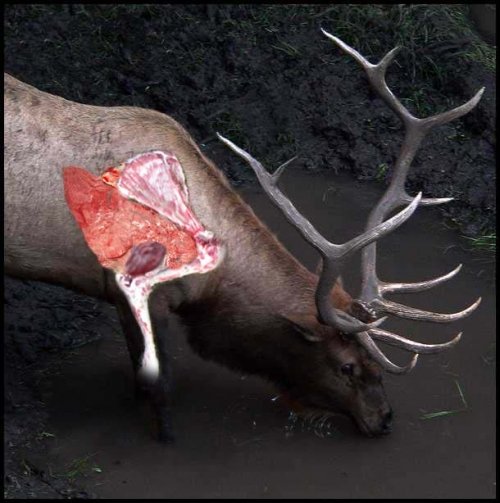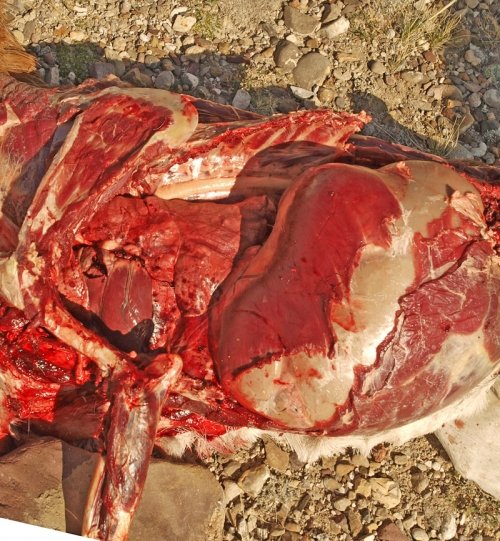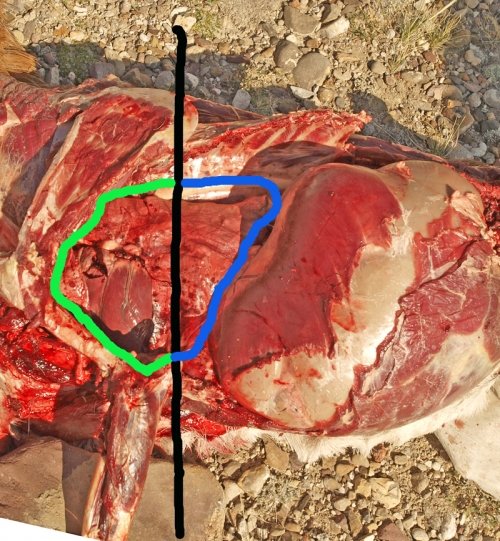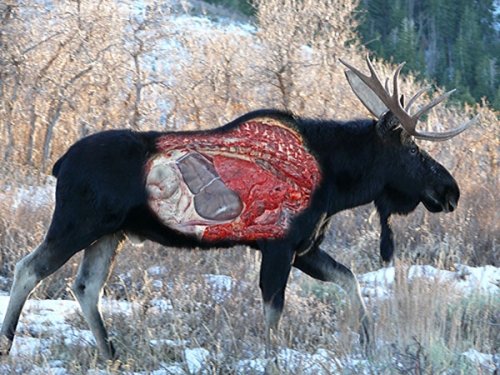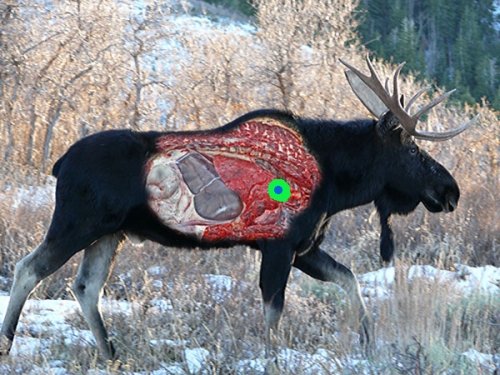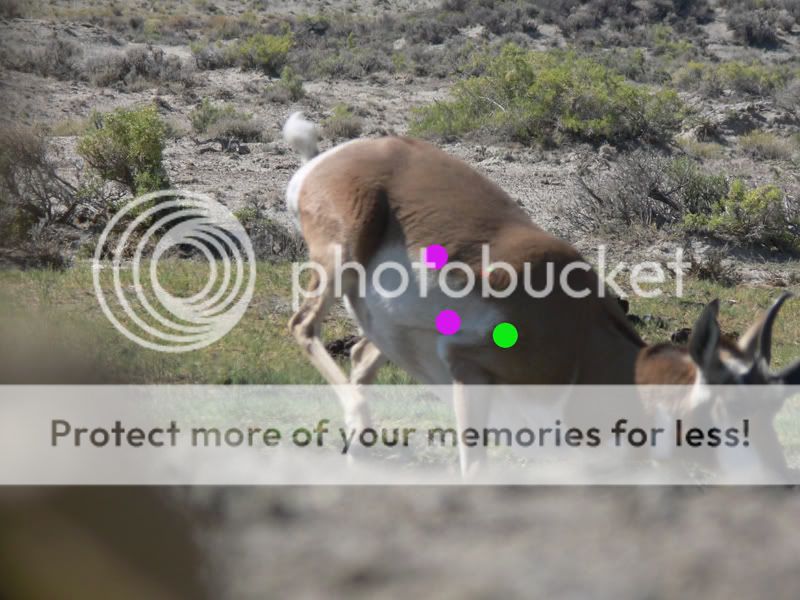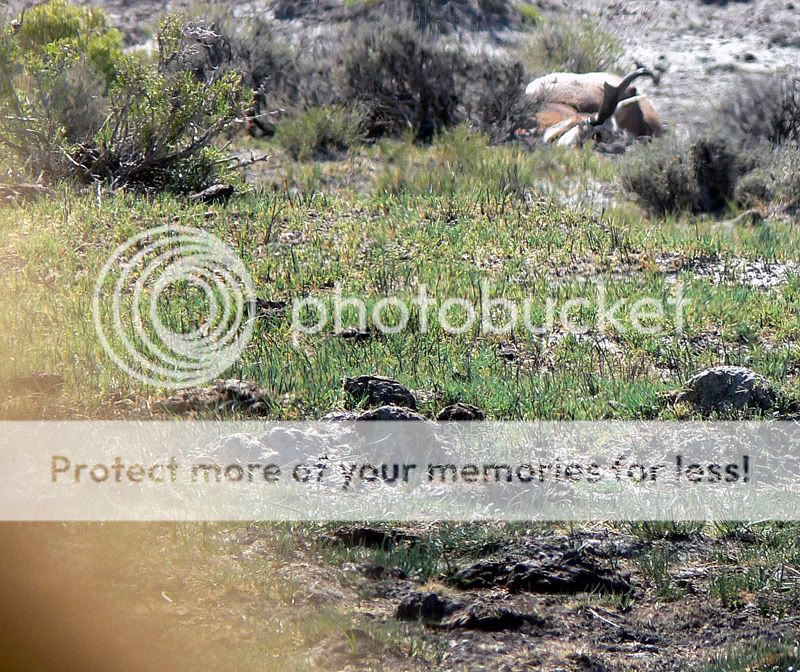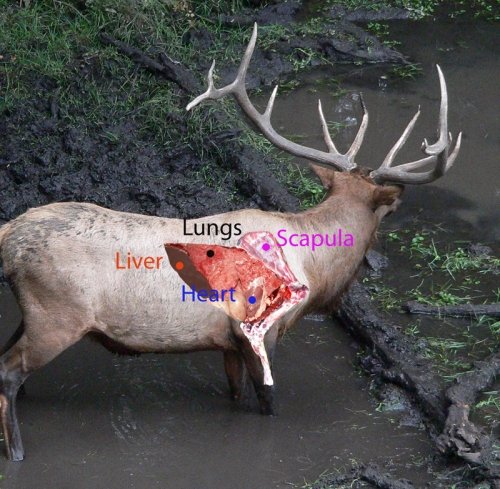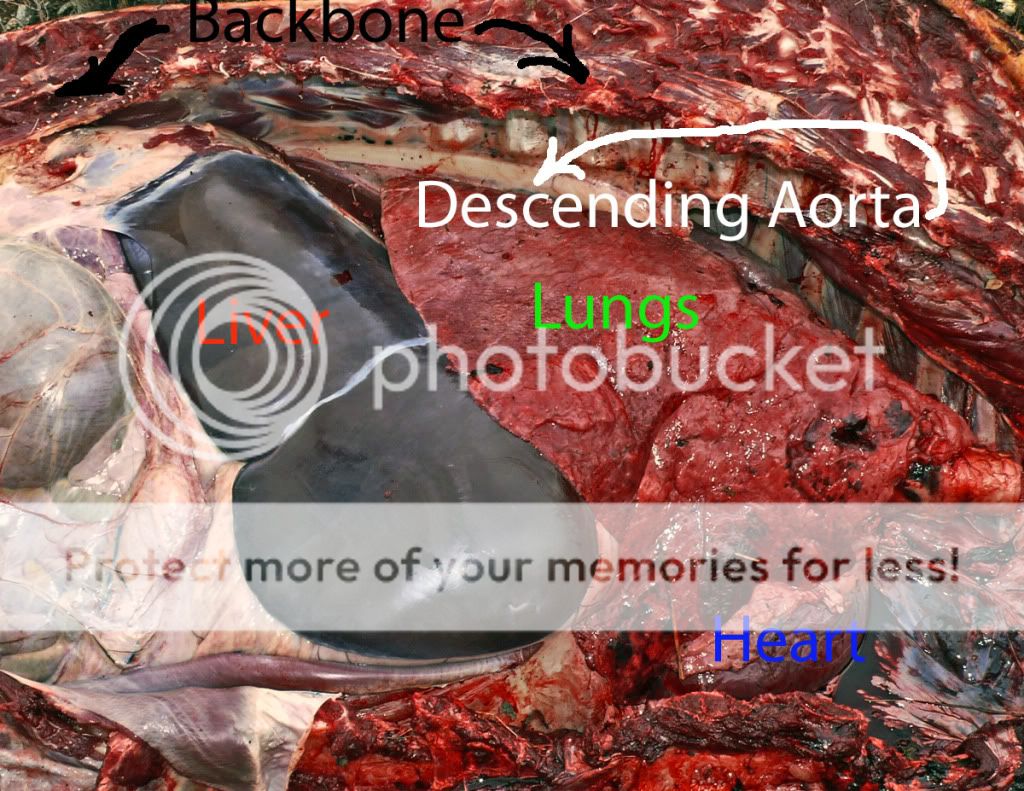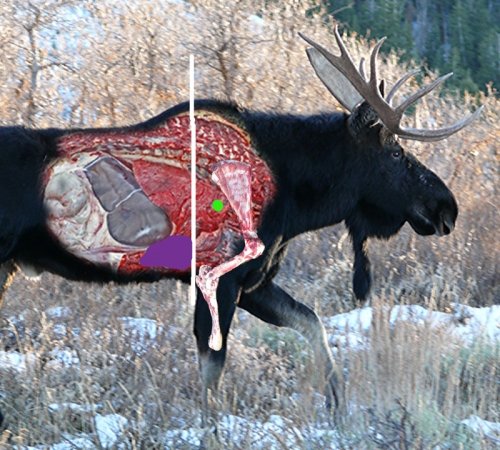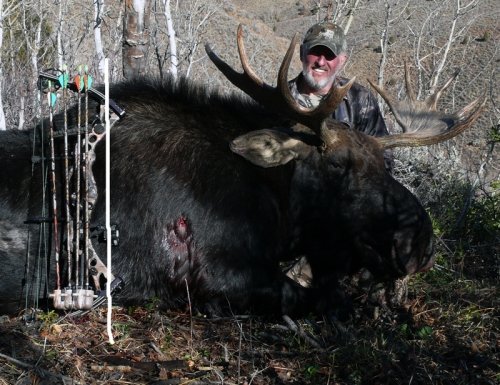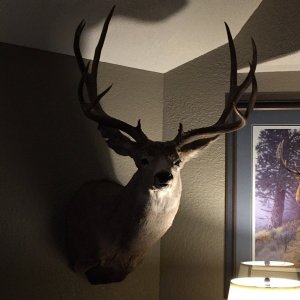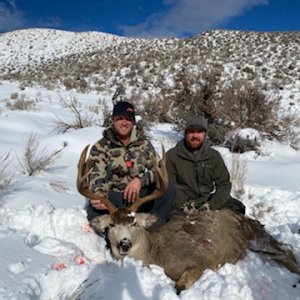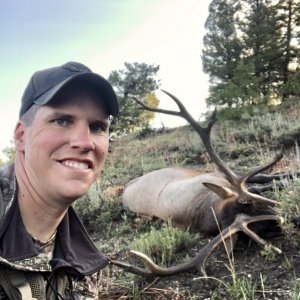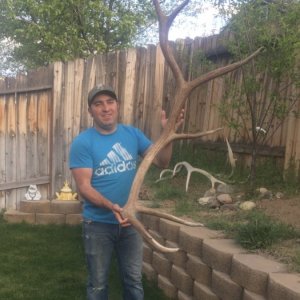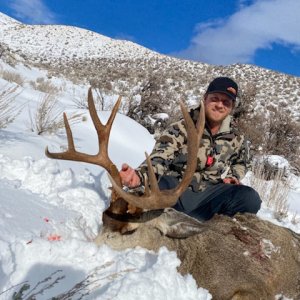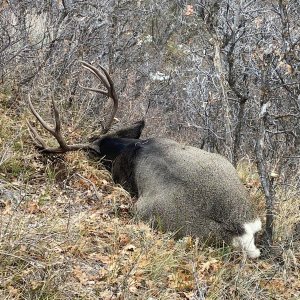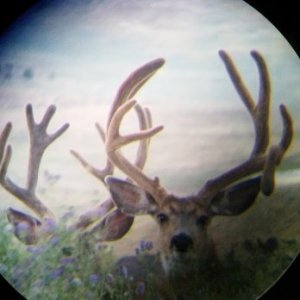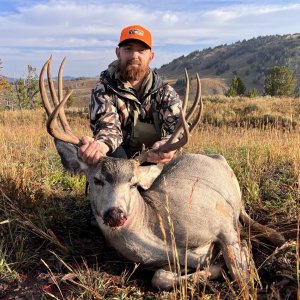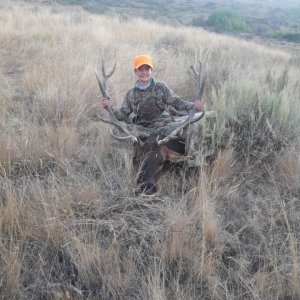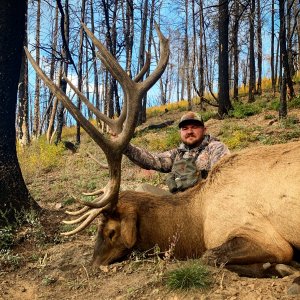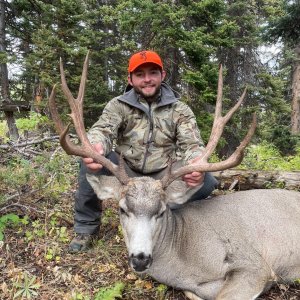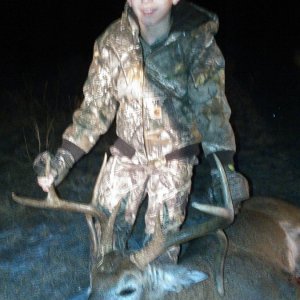Study these photos close and learn how the bones make up the front shoulder. Realize the better area in which to aim. The crease is not the area to aim, on a broadside shot with a bow, if you want the best results.
As a side note, if one hits the major bones, even with today?s equipment, it is very likely they will not push through those large bones and kill the animal. It happens on rare occasions, but it is very unlikely. A broadhead in the scapula or in the major leg bones of an elk will allow the elk to live and recover completely in most cases. An arrow in the guts, is a slow agonizing death, to the animal and once jumped they are seldom recovered. So everyone who is shooting the crease, with a bow, would be much wiser to move forward and insure more kills and less lost critters.
We all need to remember that archery should be a close encounter in which we limit our shots to close range. If you do that you are doing animals and bowhunting a big favor, because you are greatly reducing the chance of a bad hit and/or a non-recovery
Below is a good example to which I speak. In 2006 I was antelope hunting with my son. As some of you know, I love to take photos as much as I do shoot critters with my bow. So when the antelope came in, that he wanted, I began taking still photos with my camera. When my son pulled back on the buck antelope, I waited until the instance he shot and I triggered the shutter. The first photo shows the exact moment his arrow hit the buck. You will notice in the photo, if you look close, the antelope has dropped down and moved forward and you can see that action (even in a still photo) in the body and leg positions. Note the fletching of the arrow as it enters the antelope. That is the exact spot where he hit him from less than 20 yards. Also notice the green dot which is the approximate spot my son was aiming and where he wanted to hit when he released the his arrow. Notice also the violet colored spots. The lower one is where one would probably be aiming if they shot the crease and the other is where the arrow would approximately have hit had he aimed for the crease.
Also notice in the first photo on the lower left of the photo a kind of brown blur. That is the burlap corner of the shooting hole of he blind. In the second photo notice the short distance his buck made it. Again notice the burlap blur in the same area. The buck barley made it across the green, grassy ara which was behind him. Most good crease shots make it from 50 to 80 yards, but like I have noted the bad ones hit guts and unless everything is treated correctly, you have lost an animal that could have been down in seconds.
For those of you who understand all this, congratulations, but those of you who aren't shooting forward it time to make the move!
This is just some food for thought, but I can promise you that after 50 years of bowhunting I have learned some hard taught lessons as I had no one to help me. I just had to figure it out on my own. But once I began to understand how effective forward shooting is, I would never again aim for the crease unless the animal was quartering. But on broadside shots or nearly broadside shots I think you will be amazed, as was I, on how fast an arrow can kill a big animal.
Have a good one. BB

